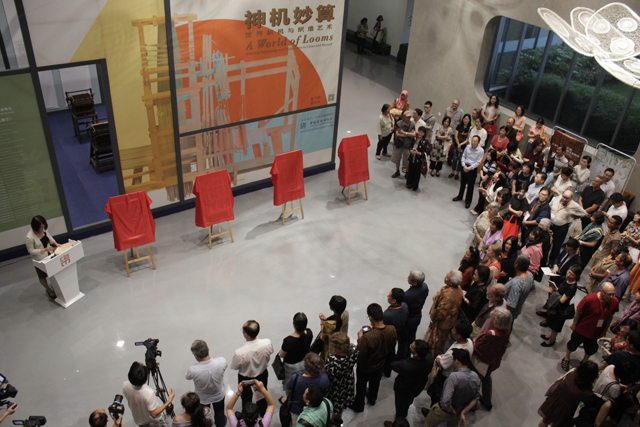
On May 30, "A World of Looms: Weaving Technology and Textile Arts in China and Beyond" Exhibition opened at Fashion Galleray of China National Silk Museum . Liu He, director of the Zhejiang Municipal Administration of Culture Heritage, Zhao Feng, curator of China National Silk Museum, and Zhang Baichun, director of the Institute for the History of Natural Sciences of the Chinese Academy of Sciences, gave speeches one after another.
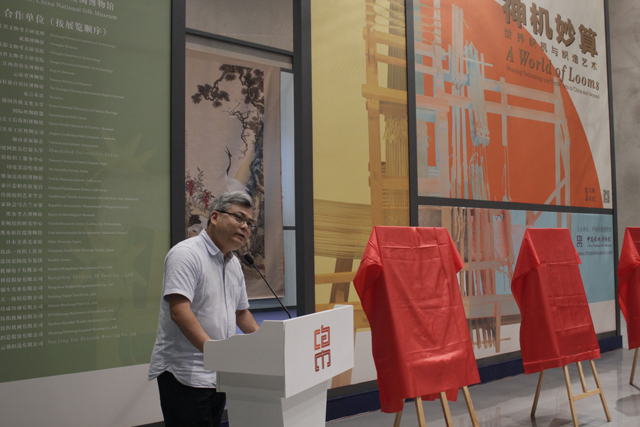
Liu He, Director of the Zhejiang Municipal Administration of Culture Heritage
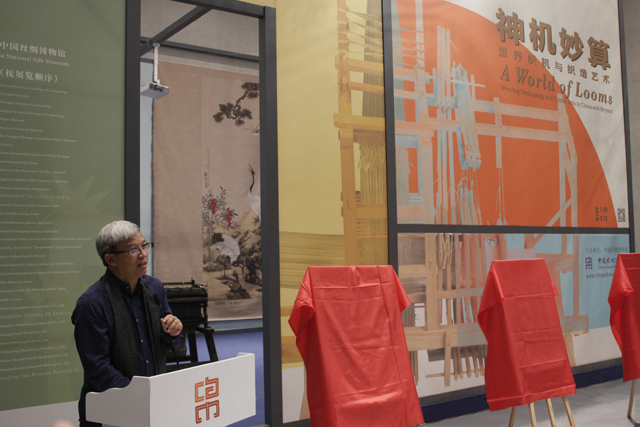
Zhao Feng, Curator of China National Silk Museum
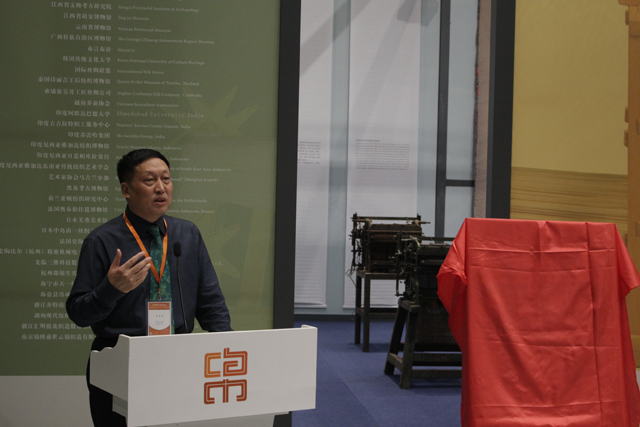
Zhang Baichun, Director of the Institute for the History of Natural Sciences, Chinese Academy of Sciences
A number of loom researchers who came from Indonesia, the United States, the Netherlands, Vietnam and China donated looms, fabrics and patterning systems as exhibits to the China National Silk Museum. Zhao Feng, the curator of China National Silk Museum, and Zhou Yang, the assistant to the curator, issued certificates of collection to the donors.
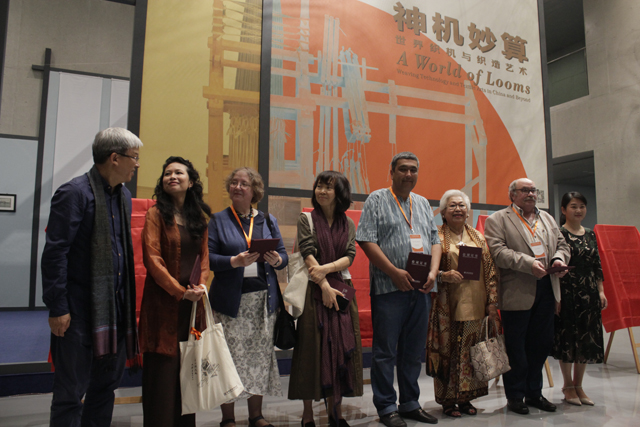
Mary Connors (United States of America) |
Donation of 11 Lao fabrics and 1 Lao loom |
Gillian Vogelsang-Eastwood (Leiden, Netherlands) |
Donation of 1 Zilu fabric |
Sandra SARDJONO (Indonesia) |
Donation of 1 Warp Ikat Backstrap Loom |
He Haiyan (China) |
Donation of patterns |
Rasul Mirzaahmedov(Uzbekistan) |
Donation loom 1 and some fabrics |
Guy Scherrer(France) |
Donation of the components and Jacquard cards of ribbons Jacquard loom |
Ning Qiaoen, consul general of Indonesia in Shanghai, Liu He, director of the Zhejiang Municipal Administration of Culture Heritage, Cao Hong, deputy director of the Zhejiang Municipal Administration of Culture Heritage, Rasul Mirzaahmedov, official of the United Nations Educational, Scientific and Cultural Organization (UNESCO) Office in Tashkent, Uzbekistan, and Chen'an, deputy director of Department of Foreign and Overseas Chinese Affairs of Zhejiang, Dr. Eva Strand, associate professor and director of Textile Research Center of University of Copenhagen in Denmark, Zhang Baochun, director of the Institute of the History of Natural Science of Chinese Academy of Sciences, and Andrée Etheve, curator of the FEM Museum of Madagascar unveiled "A World of Looms: Weaving Technology and Textile Arts in China and Beyond" Exhibition.
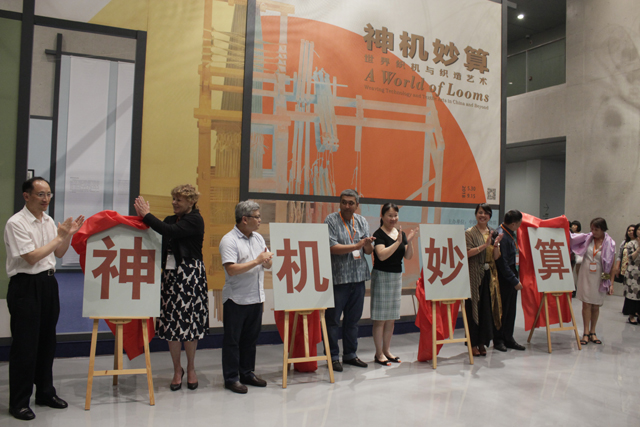
After the opening ceremony, the guests went to the exhibition hall in Fashion Gallery. Zhao Feng, as the curator of the exhibition, gave a wonderful guide to the guests.
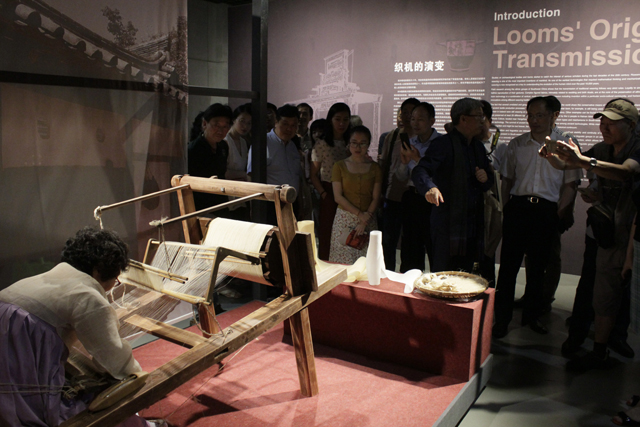
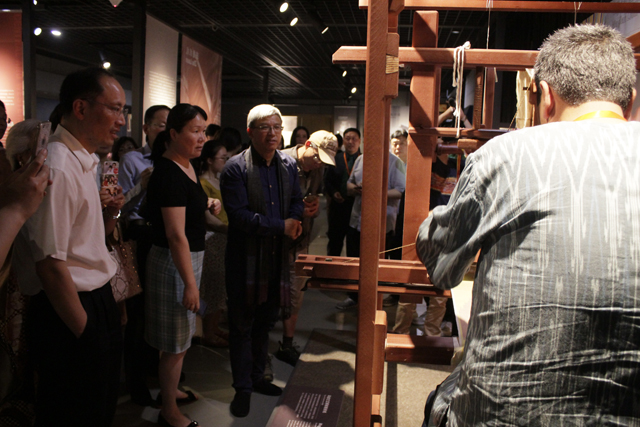
Clothing, food and shelter are the basic needs of human beings. The invention and creation of textile and loom are all over the world. All looms can perform the functions of weaving, and produce unique textiles. Dr. Joseph Lee, a famous expert in the history of Chinese science and technology and a member of the Royal Society of London, said, “in ancient Chinese, machine not only refers to looms, but also to wit and wisdom”. Therefore, the exhibition not only displays the looms and jacquard process, but also shows the whole process of science and art in which human beings create material culture through looms.
This "A World of Looms: Weaving Technology and Textile Arts in China and Beyond" Exhibition is the largest loom exhibition ever held by the China National Silk Museum in conjunction with loom experts and professional organizations worldwide. The exhibition area covers the Silk Road Gallery, Weaving Gallery, Fashion Gallery and the outdoor space of the pavilion area. According to Space, the exhibition is divided into nine major parts, named, China, Eastern Asia, Mainland Southeast Asia, Insular Southeast Asia, South Asia, Central and Western Asia, Europe, South America and Africa, and special Jacquard loom part. Through more than 50 looms of different types and a rich variety of fabrics, the technological changes in looms and weaving practices in local customs and traditions have been demonstrated. It shows the history of the world loom's diverse development, mutual exchange and innovation, and explains the prosperity brought by weaving technology to the Silk Road, and the importance and urgency of preserving the traditional excellent traditional culture.
The exhibition will last until September 15.
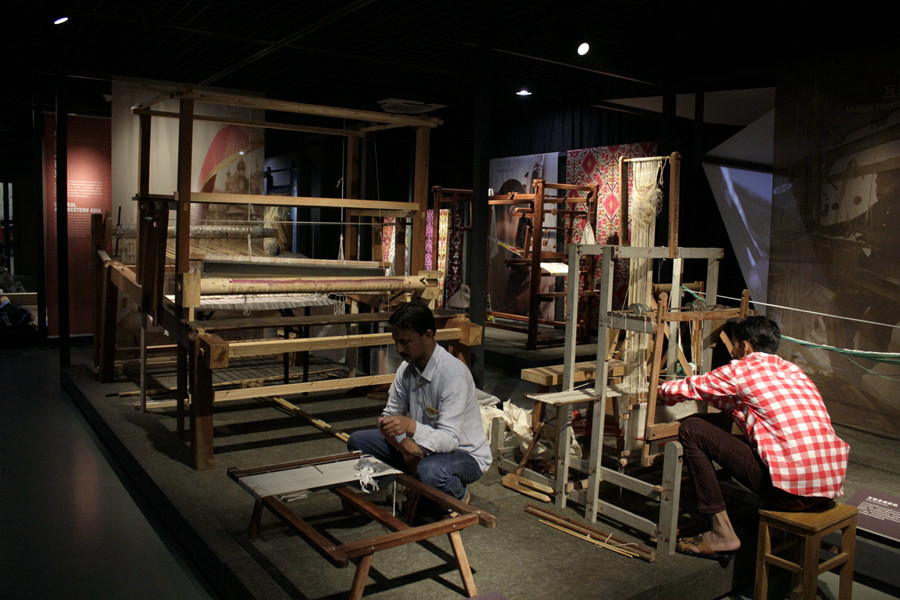
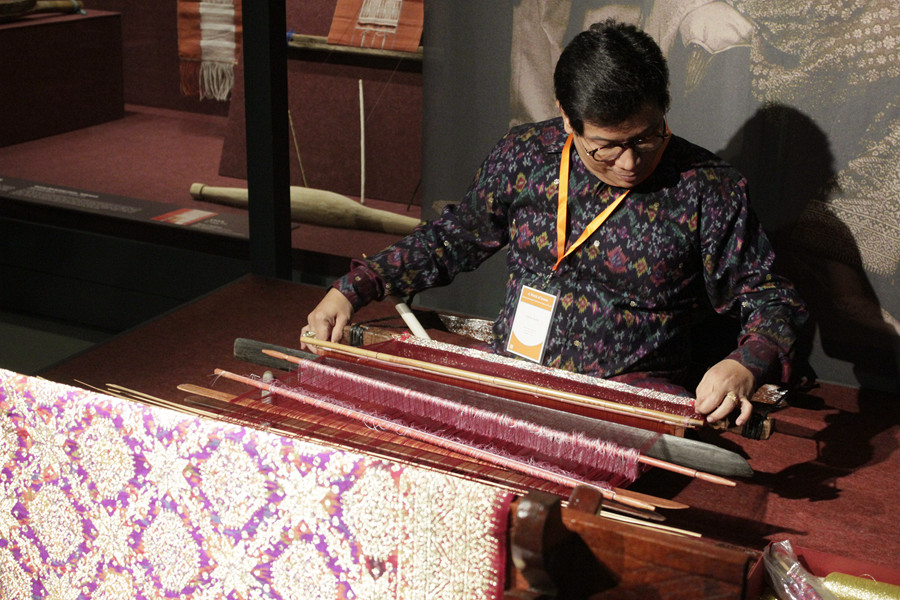
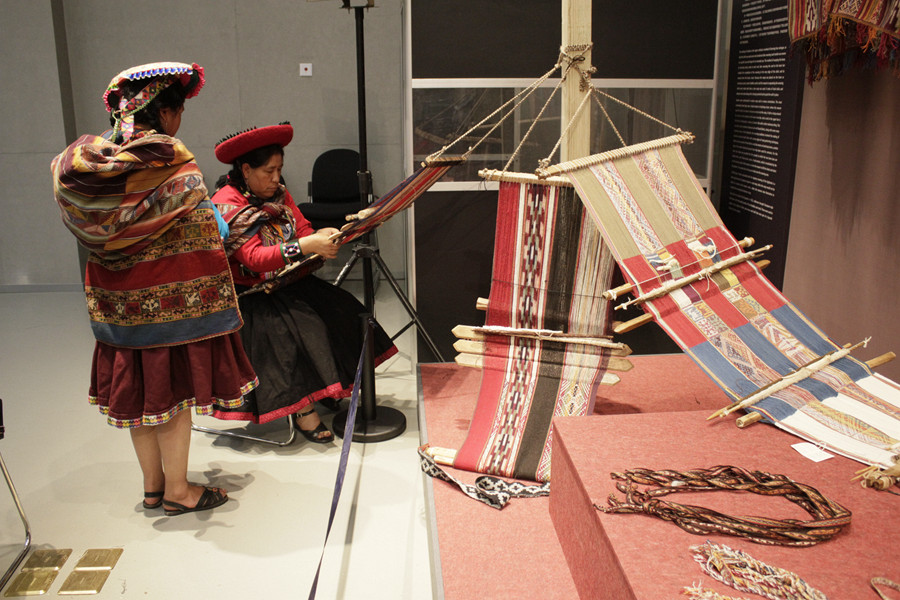
 Pay attention to us
×
Pay attention to us
×